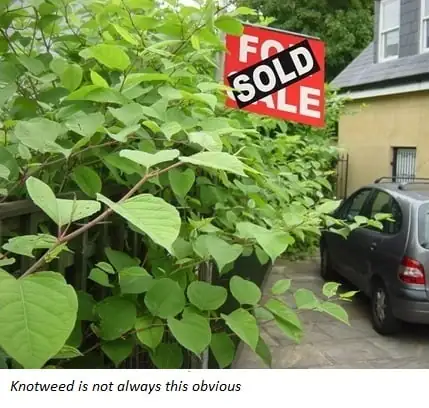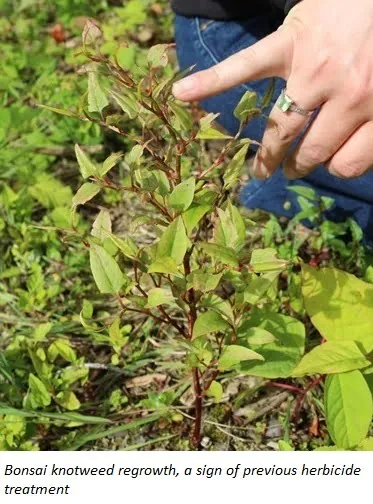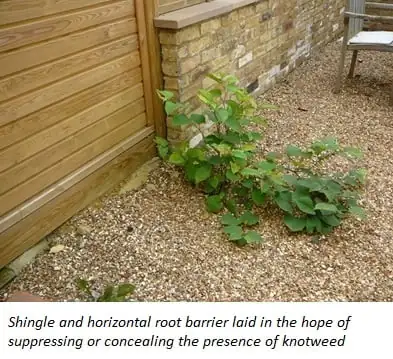What to do if you are the victim of misrepresentation

Purchasing a property and then discovering that it is affected by knotweed can cost a house purchaser thousands, both in relation to the treatment of the knotweed and the impact it can have on the value of the property.
A recent survey by YouGov found that 78% of those aware of Japanese knotweed would be put off buying a property if they discovered knotweed was present. Perhaps it is not altogether surprising that sellers go to great lengths to conceal the presence of knotweed on their property to potential buyers and surveyors.
It is also highly likely that those who seek to conceal knotweed do not know the consequences of their deceitful actions.
If it can be proved that knotweed was present at the time of sale and that the seller knew of its presence, or ought to have known of it, then it is likely that the purchaser will have a strong claim against the seller for misrepresentation.
In this context, a misrepresentation is a false statement of fact (relating to the presence of knotweed) made by the seller to the purchaser, which induces them into purchasing the property and causes them to sustain a loss. It does not need to be the only factor which induced the sale.
The starting point is ‘The Law Society’s Property Information Form’ (TA6) question 7.8. This requires the seller to say whether the property is affected by knotweed and specifically asks:
“Is the property affected by Japanese knotweed?”
The seller then has the following tick box options available; ‘Yes’, ‘No’ or ‘Not known’.
If the seller ticks either ‘No’ or ‘Not known’ to this question but they did in fact know of the presence of knotweed on the property then it is likely that they have committed a fraudulent misrepresentation. If they ought to have known about the presence of the knotweed or ticked ‘No’ and had no reasonable grounds for believing that the property was not affected by knotweed then it is likely that they have committed a negligent misrepresentation. An example of negligent misrepresentation would be where the seller knew a plant was growing in the garden but took no steps to seek to identify it prior to completing the TA6.
Prove it!

The first thing the buyer should do once they have become aware that there is potentially knotweed on the property is to instruct a specialist knotweed removal, control and eradication company. These specialists will be able to provide the buyer with a report which will comment on the extent and maturity of the knotweed. It is vital to have this because the buyer needs to prove that the knotweed was present at the time of purchase. The knotweed specialist will be able to comment on the maturity of the knotweed having considered both its visible appearance and its root structure; and whether the knotweed has been treated either by herbicide, cutting it back or by ripping it up from the ground. This can be crucial in proving fraudulent or negligent misrepresentation.
It is also useful for the purchaser to speak to neighbours as they are often able to provide witness evidence, for example, confirming conversations that they have had with the sellers regarding knotweed.
Proving that the seller did know about the knotweed when they ticked ‘Not known’
It is very common for sellers to tick ‘Not known’ on the TA6 in the hope that when the knotweed is subsequently discovered, they can claim that they did not know whether or not there was knotweed present. They claim to have ‘innocently’ ticked ‘Not known’ and left it to the buyer to investigate further.
In this situation, the buyer may still be able to bring a case in misrepresentation if they can prove that the seller did in fact positively know that there was knotweed on the property.
The buyer should look for signs of concealment of the knotweed as evidence that the seller did know of its presence. For example, are there signs that the knotweed has been cut down immediately prior to sale?
Perhaps the seller has landscaped the garden and fitted artificial grass in an attempt to avoid the knotweed being identified during property visits and surveyor’s inspections; have fences been erected behind which there is evidence of knotweed? These are all indicators that the seller knew that there was knotweed on the property. However, proving this is still difficult and the safest course of action for a buyer where a seller has ticked “Not known” is to get their conveyancing solicitor to ask further questions around this response.
But I didn’t know …

One of the most frequently raised defences that sellers seek to rely on in response to a claim of misrepresentation is they say they do not know what knotweed is and therefore ticked ‘No’ because they were unaware that their property was affected by such a plant. This is not a legitimate defence to such a claim.
By ticking ‘No’ to question 7.8 on the TA6, the seller is making two positive statements;
(1) that they know what knotweed is, and
(2) that they have taken positive steps to satisfy themselves that it is not present on the property.
Therefore, simply pleading ignorance will not be enough for the seller to avoid liability.
What is the remedy?
If the buyer is successful in a claim for misrepresentation then they are likely to be awarded the cost of treating the knotweed, plus they can also seek to claim the residual diminution in value of the property caused by the stigma of being associated with knotweed. This, together with legal fees, can run in to tens of thousands for the seller.

Roger Burnett at Charles Lyndon
Sign up for more Japanese knotweed Beacon articles



